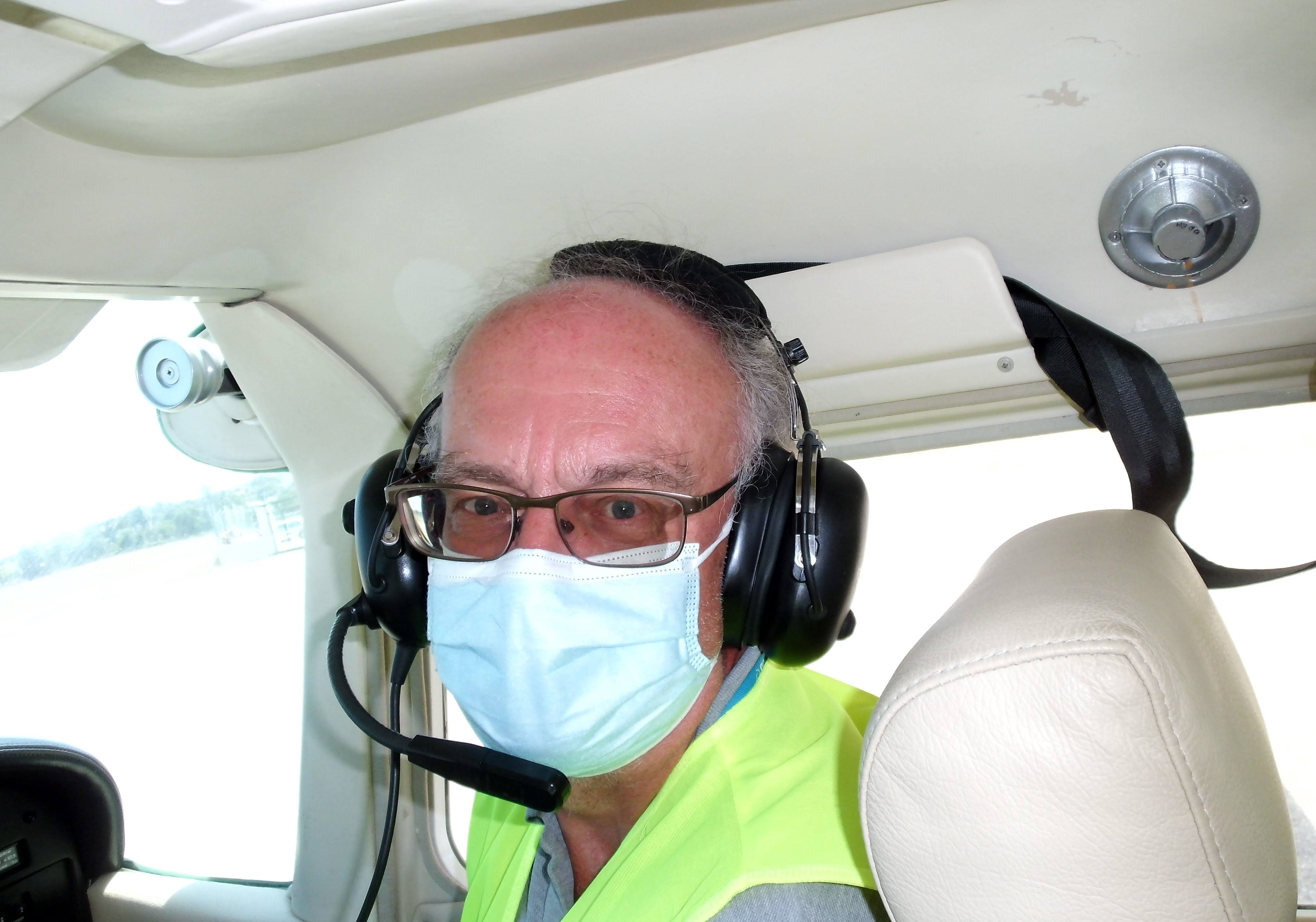King's Cup - 1933
Full Race Story - see here
-
Lipton, Laurence
Mr Laurence Lipton 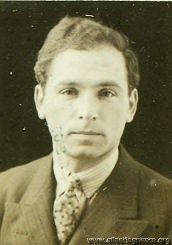 1930, aged 34
1930, aged 34An engineer, from London
Competed in 1933 and 1934 in G-ABVW 'Jason 4', the D.H. Moth he bought from Amy Johnson.
-
Lowdell, George Edward
Wing Cmdr George Edward Lowdell AFM 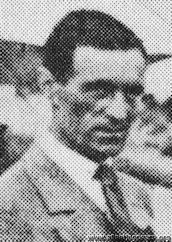
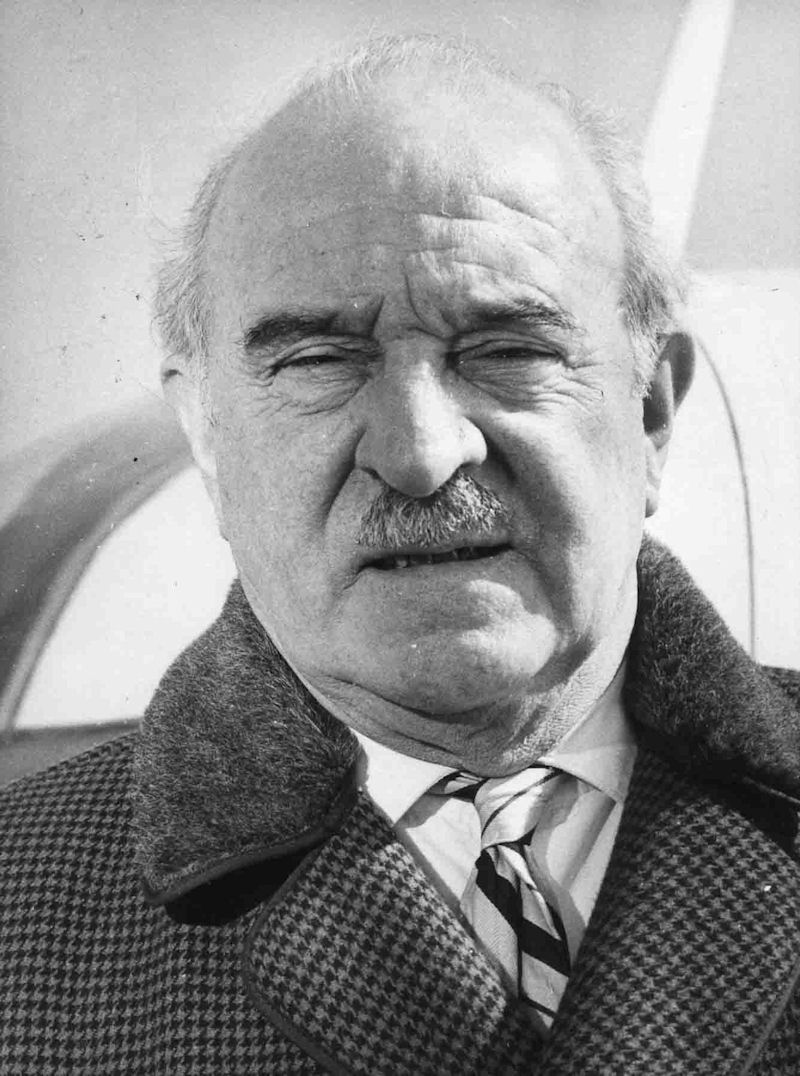
Flying instructor at RAF Digby in 1925 (he taught Allen Wheeler to fly, who said of him "How lucky I was with my instructor George Lowdell! Apart from being a magnificent pilot he was the most inspiring teacher").
Instructor with Suffolk and Eastern Counties Aero Club in 1928; later a Wing Commander, and instructor with Shoreham School of Flying.
However, in 1932 he was convicted of drunk-driving:
"STUNT FLIER FINED
CLACTON CARNIVAL SEQUEL
George Edward Lowdell, 29, an airman instructor, of Belvedere Road, Ipswich, was charged at Colchester on Friday with being drunk in charge of a motor car.
Stanley Elgar, postmaster of Colchester, stated that he was driving his car from Walton-on-the-Naze to Colchester, and just after he had left Weeley he noticed a Morris car in front of him " performing a rather peculiar course all over the road, swerving frequently from the near side to the off.
Several times it mounted the margin of the road, and on one occasion two young ladies had to " skip " quickly out of the way. The speed was never excessive. Near Greenstead Rectory the car was pulled up, and witness went to the driver and said: "Do you realise what you have been doing? You have only just escaped death, and narrowly missed killing other people." Defendant seemed dazed, and when told that he could not go on he said he would have to go on, he had to get to Brooklands tnat night.
Two police-officers came, and defendant was arrested. Replying to Mr. Frampton, witness said the driver did not give him the impression that he was a very tired man. , Arthur Houston, commercial traveller, Thorpe Road, Tendring, who was proceeding in the direction of Colchester, said defendant's car was '' all over the place."
When charged, defendant's reply was so muddled that he could not be understood. Dr. William F. Payne said he came to the conclusion that defendant was drunk. Defendant said he had had some whisky and beer.
Defendant, in the witness-box, said he was formerly chief instructor to the Suffolk Aero Club, and was now instructor at Brooklands. He had been giving a demonstration at Clacton. He flew to Clacton, and during the day gave exhibitions of trick flying and joy rides. In the morning there was an accident, and he was up in the air longer than usual at upside down flying in order to amuse the crowd. During the day he had nothing alcoholic to drink, but after he had finished flying at 6.30 p.m. he had five beers. He had had nothing to eat since luncheon, and left Clacton at 8 p.m. After a heavy day he felt queer when in the car, and kept dozing.
When he arrived at the police - station he felt 'dead tired," and his whole condition he put down to continuous flying, to having no food, and to the heat of the day.
Edwin Freshfield, an undergraduate, and a pupil of defendant, said the stunt flying defendant did that day imposed a great strain. When defendant left Clacton he was very tired, but not drunk. Mr. Frampton submitted that defendant's condition was due to absolute fatigue.
The Chairman (Mr. C. M. Stanford) said the Bench were unanimous in finding the case proved. While it might have been only an indiscretion, they had to take serious notice of it, and defendant would be fined £5, with £2/5/9 costs. The Bench appreciated the action of those witnesses who had come forward at their own expense and loss of time to protect the public, and to save the defendant himself from further danger. "
-
Napier, Carill Stanley
Mr Carill Stanley Napier 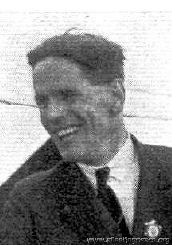 1937, aged 30
1937, aged 30b. 29 Apr 1907 From Putney, London
Son of the famous engine-maker Montague; an apprentice with Westlands in 1929. 'his one recreation apart from flying is the commendable indoor sport of darts. Believes that air-racing is good fun only when taken not too seriously''
Killed in WWII: 29 April 1941, when a First Officer in the Air Transport Auxiliary; buried RAF Halton, Bucks.
see https://www.ata-ferry-pilots.org/index.php/category-blog-1939/53-napier-carill
-
Percival, Capt Edgar Wikner
Capt Edgar Wikner Percival 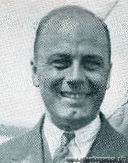 1930, aged 32
1930, aged 32Australian aeronautical genius who ended up in the USA and New Zealand, via Luton.
b. 23 Feb 1897 in Albury, N.S.W. In 1915, while training in England, he became only the third person on record to recover from a spin (supposedly, Fred Raynham [q.v.] was the first). He later wrote: "After that I found that spinning was great fun and spun a Bristol Scout the next day. Very much later, on the Western Front, I found a spin was a very speedy way of dropping on the enemy - especially through a handy cloud."
Designer, and pilot, of some of the finest racing and record-breaking aeroplanes of all time.
"He always flies his rakish Mew Gulls in a soft felt hat and tries to look as much unlike an intrepid birdman as possible, though he has never yet deceived the handicappers by this ruse."
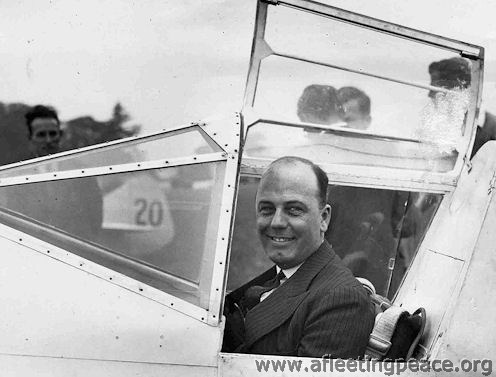 King's Cup 1934; sans trilby, for once
King's Cup 1934; sans trilby, for onceFlight said he "has an uncanny navigational sense in thick weather, but sometimes flies pensively past his destination in 100-mile visibility".
Michael Madigan wrote: "It was very difficult to resist his puckish humour and not to fall under his spell... In his early flying days he had a fox-terrier called Ginger Mick. This dog always sat in the [open] rear cockpit tethered to a spar. One day as Edgar was preparing to land he went into a loop to lose height, forgetting about his passenger. After levelling off he heard strange scrabbling noises from the back and looking out saw Ginger Mick frantically dog-paddling in the air suspended by his lead. Edgar managed to manoevre Ginger back into the plane, and after landing he thought he would never see Ginger Mick again as he rushed off, but Ginger was as persistent an aviator as his master and reappeared, to settle in his place at start-up, large as life, and eager for more."
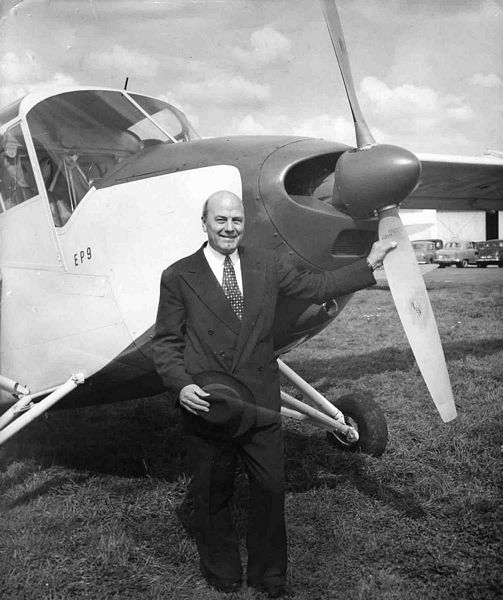 In 1956, with the EP.9 'Prospector'. And trilby.
In 1956, with the EP.9 'Prospector'. And trilby.© The Royal Aero Club
d. 21 Jan 1984; his ashes were taken by the RAAF "to be scattered in the very field in Richmond, N.S.,W., where it all began."
"Edgar Percival had a strong character, a high mental and moral sense, and was a perfectionist - the qualities which made him successful. He was the dominant presence which compelled attention in a group. This dominance arose from his vast knowledge of aviation in all its aspects... all this and his strength of will did not make him an easy associate. He could see problems clearly, had the energy to solve them, and drove himself relentlessly, which made him rather intolerant of those less gifted."
(All quotes via Martin Barraclough, for which many thanks)
-
Probyn, Harold Melsome
Wing-Cmdr Harold Melsome Probyn 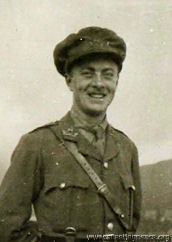 1916, when a 2nd Lieut in the 2/5th Royal Warwickshire Regiment, aged 25
1916, when a 2nd Lieut in the 2/5th Royal Warwickshire Regiment, aged 25from Lancashire, later an Air Commodore; retired to Kenya.
Felt that aviation wasn't as much fun after the invention of the parachute.
In 1927-8 he entered as 'Harold Brooklyn', and 1929-31 he entered as 'J Wellworth'; I have no idea why.
-
Runciman, Walter Leslie
Hon Walter Leslie Runciman OBE AFC 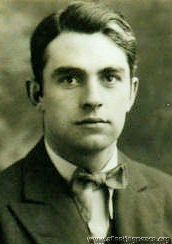
photo: 1928, aged 28
2nd Viscount Runciman of Doxford, from Newcastle-upon-Tyne; after Eton and Cambridge, joined his dad's shipping firm, then Imperial Airways. First Director-General of BOAC, Commodore of the Royal Yacht Squadron, OBE, etc, etc; died 1989
His sister, Margaret Fairweather, was killed in WWII serving in the ATA. See
https://www.ata-ferry-pilots.org/index.php/category-blog-1940/81-fairweather-margaret-mrs
-
Sanders, Theodore Cecil
Mr Theodore Cecil Sanders 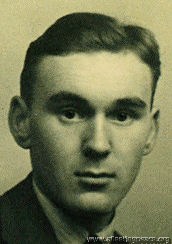 1930, aged 18
1930, aged 18"F/O. William Daniel Dennehy and F/O. Theodore Cecil Sanders, the pilot and passenger of an aircraft of No. 2 Armoured Car Company, Ramleh, Palestine, lost their lives in an accident which occurred at Sarafand on September 26, 1935"
-
Sayer, Phillip Edward Gerald
F/O Phillip Edward Gerald 'Gerry' Sayer 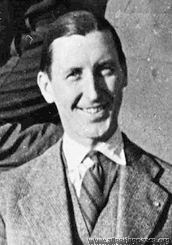
The first British pilot to fly a jet fighter, in 1941; killed in 1942 in a flying accident in Northumberland.
-
Schofield, Harry Methuen
Flt-Lt Harry Methuen Schofield 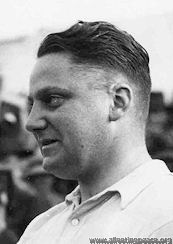
photo: 1934, aged 35
Director and General Manager of General Aircraft Limited, who built the Monospar aircraft. Spent four years after WWI building church organs.
He was a Schneider pilot in 1927 but crashed before the race, because they'd put the aircraft back together wrongly - he was thrown clear in the crash, but his clothes were dragged off, leaving him clad only in a shirt; wrote a couple of books; died 1955.
To see some video footage (and to hear him say “Well, I am very proud to have won this cup…but, um, I think the man who should be speaking is Mr. Steiger who built the machine… I couldn’t have done it without the machine, and I think a lot of people could have won it in the machine, and that’s all there is to be said about it, really”),
click here: King's Cup Air Race - British Pathé (britishpathe.com)
-
Scott, Michael David Llewellyn
Mr Michael David Llewellyn Scott 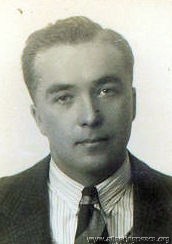 1930, aged 24
1930, aged 24b. 12 Sep 1906 in Eton, Bucks.
B.A. Cantab. and an 'Old Uppinghamian'. In 1930, a solicitor from Stoke Poges, if you hadn't already guessed :-), and, for a while, v. famous in the Skegness area...
In 1930, after competing in the King's Cup, he crashed near Skegness when the wheels of his D.H.60X Moth G-EBXG caught a wire fence. He jumped clear, but his mechanic (Howard), who was still strapped in, was 'injured about the head'.
May 1932, he had a terrifying ordeal (a bit like General and Mrs Lewin in the Sudan swamps, but even worse) in the remote reaches of The Wash; "CRIPPLED 'PLANE ON SANDBANK SET ON FIRE TO ATTRACT ATTENTION - HULL TRADER TO RESCUE"
"Captain (sic) M. D. L. Scott, secretary of the Skegness Aero Club, was flying with a passenger named Tingall, from Skegness to Hunstanton, when his 'plane developed engine trouble. They were about halfway across the Wash, and he was compelled to a make forced landing on a sandbank which was uncovered, as it was low tide... they made an effort to swim the five miles to shore, but the current proved too strong. They then tried to attract attention by setting fire to the 'plane. Later the flames were noticed by a small cargo boat named Lizzie and Annie, which came alongside and took Captain Scott and his passenger on board. "
Only just in time, too - the tide was rising fast... only the engine of the aeroplane remained unburnt... Gosh!
By 1933, he was offering to take sun-starved midlanders to be braced up a bit in Skegness; 25 bob return from Nottingham or Leicester, 35 shillings from Birmingham: "Nottingham people will be able to fly to Skegness again this summer at fares which will actually be cheaper than the first-class railway rates. This enterprising venture, which was inaugurated last year, is to be resumed again at Easter on a very much bigger scale... The service is to be conducted Mr. M. D. L. Scott, of Eastern Air Services, Skegness".
The Eastern Air Transport Company carried 30,000 passengers in the 4 years to 1933 without serious incident.
In November 1934, the Western Daily Press reported thus: "FOUND: AN AEROPLANE. A police constable, while on duty in Pinner, Middlesex, yesterday, found a monoplane in a field. No one seemed to know how the monoplane got there, and the constable began to make inquiries. The machine appeared to be a privately owned one, and was in good condition save for some slight damage to the undercarriage. The monoplane bore the marks G-AAPY and inscribed inside the fuselage was the name "M. D. L. Scott, Skegness." Further inquiries by the officer among the farm hands and the owner of the farm, Mr Hall, showed that someone saw an aeroplane land in a field on Wednesday afternoon. From that time until the constable discovered it yesterday it has been completely unattended, and, far as the police know, unclaimed. A Mr L. Scott, an airman, operates a private aerodrome and club at Winthorpe, a mile or so from Skegness. Pinner police were last night in communication with the police at Skegness."
[G-AAPY was a Desoutter I, belonging to Michael. It was, indeed, written off in November 1934.)
He then turned to golf in the late 30s - winner of the 'Witt Cup' in 1938.
Married firstly to Marguerite; their son, Roderick, was born in December 1943. By then, he was a Flt-Lt (RAF Volunteer Reserve) in Oxford.
However, by 1948, when he married Miss Patricia Collette Thomas (from Bude, Cornwall) in Zurich, they lived at 400 East 57th St, New York.
Describing himself as a 'Sales Manager', he travelled (first class) from Durban to Southampton in February 1959, intending to stay a couple of months with the Duke of Somerset, Maiden Bradley, Wiltshire. Like you do.
-
Stack, Thomas Neville
Capt Thomas Neville Stack 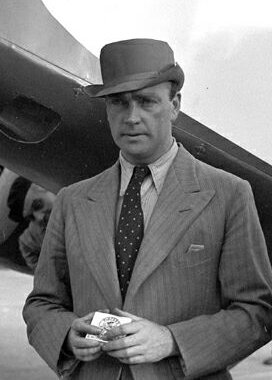 1934, aged 38
1934, aged 38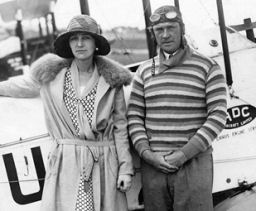
RAeC [0312-0087]
b. 1 April 1896; universally known as 'Stacko'
RFC in WWI, then became a familiar figure in aviation circles during the 1920s - in 1926 he and Bernard Leete made the first flight from England to India in two DH. Moths, one of several record-breaking flights.
He and J R Chaplin tried to fly to Australia and back in 1931, but had to turn back at Constantinople, Turkey, with carburettor trouble; later in the year the same pair attempted a flight to India and back, but again turned back with mechanical problems.
He was appointed 'Air Superintendent' of Iraq Airwork Ltd in 1933, and flew their first machine (a Spartan Cruiser) there via Cairo in 1933. Shortly afterwards, he flew 2 doctors and a nurse out to India, to perform an urgent operation on a Nepalese princess.
Late 1933 found him testing the Airspeed Courier - which is probably where he met Sydney Turner - and was widely expected to fly it in the MacRobertson Race. A month before the race, he broke (his own) London-Copenhagen record in a Miles Hawk, which is perhaps why he was too busy to inspect the Viceroy properly....
He turned up for the MacRobertson Race looking very tired and drawn - Alan Goodfellow described him as looking 'over-trained, physically', and Neville Shute Norway said he was "an exhausted and a worried man".
Shortly after the race, he was appointed Air Superintendent and Manager of Hillman's Airways; after that became part of British Airways he spent time in Turkey, advising them on civil aviation.
He was killed when run over by a lorry in Karachi, India on 22nd February 1949, aged 52. At first, the Karachi Police said he had committed suicide but, while agreeing that he was 'on the verge of a nervous breakdown', the inquiry decided that the cause of death was actually an aneurism of the aorta, and he would have died anyway.
Neville was "always very good company. He was never happier than when singing a song and strumming on his banjo."
-
Stainforth, George Hedley
Flt-Lt George Hedley Stainforth DFC 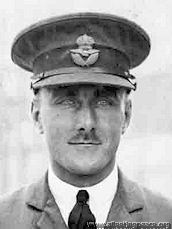 1929, aged 30
1929, aged 30from Worthing, Sussex. A man "so quiet and withdrawn that some thought he was dim". He was certainly a big, humorous man who was "mentally slow to grasp a technical point" but he had immense tenacity and would keep working away at it until he understood it. He was hopeless with money, and relied on his wife to look after it for him.
Schneider Pilot in 1929 and 1931; first man in the world to exceed 400mph, in 1931.
He was a test pilot at Farnborough in 1933, and flew the Airspeed Courier on its first test flights - Airspeed's Neville Shute Norway said that "in the air he was masterly, of course". He certainly gave George the credit for saving the aeroplane on one occasion when the engine cut out.
Killed in WWII: 27th September 1942 when a Wing Commander (pilot), 89 Sqn RAF; buried Ismailia, Egypt
-
Strange, Louis Arbon
Lieut-Col Louis Arbon Strange DSO MC DFC 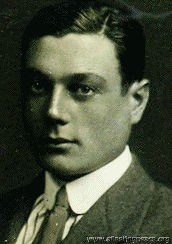 1913, when a farmer from Dorset, aged 22
1913, when a farmer from Dorset, aged 22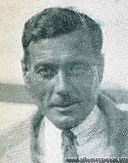 1930, aged 39
1930, aged 39'Flying Rebel'; WWI pilot and inventor; later Director of Spartan, Simmonds and Whitney Straight companies.
He was "none other than the famed R.F.C. pilot who, fighting a German at 8,000ft over Ypres in 1915, suddenly found his Martinsyde out of control, was flung out of his seat, and spun down 5,000 feet hanging from the Lewis gun mounting. He eventually got the machine under control with his feet."
Bar to his DFC in June 1940, while in the RAF Volunteer Reserve: "P/O. Strange was detailed to proceed from Hendon to Merville to act as ground control officer during the arrival and departure of various aircraft carrying food supplies. He displayed great skill and determination whilst under heavy bombing attacks and machine gun fire at Merville, where he was responsible for the repair and successful despatch of two aircraft to England. In the last, remaining aircraft which was repaired under his supervision, he returned to Hendon in spite of being repeatedly attacked by Messerschmitts until well out to sea. He had no guns in action and had never flown this type of aircraft previously, but his brilliant piloting enabled him to return."
Wing Commander in WWII, awarded OBE and US Bronze Star; returned to farming and died in 1966.
-
Styran, Arthur John Graham
Mr Arthur John Graham 'Bill' Styran 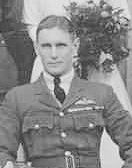 1921
1921b. 28 Jul 1890, Londonderry, Ireland but lived in England from 1891
Royal Field Artillery Lt, then RAF in WWI
m. 1921 Violet [Mitford] in Morpeth, Northumberland:
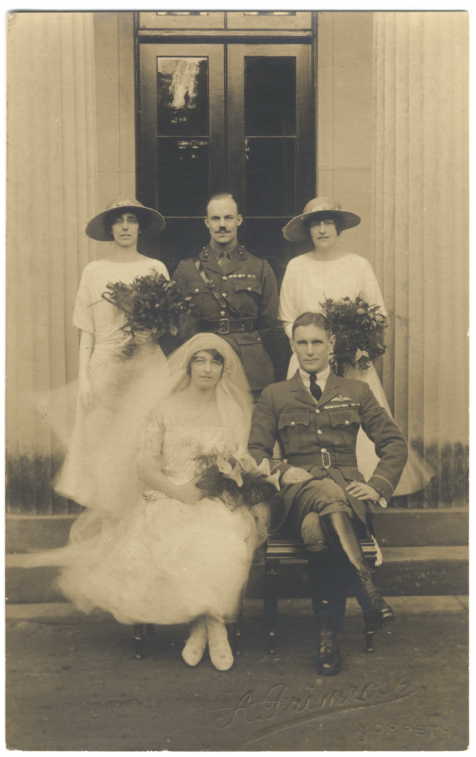 Ancestry.co.uk
Ancestry.co.uk2 October 1933: "The recent tragic sequence of British air accidents was continued yesterday by two crashes, costing four lives. The more serious occurred near Hawkhurst, Kent, when disaster overtook a private 'plane returning from the R 101 unveiling ceremony at Allonne. The machine crashed at a terrific speed out of dense mist into a field.
The three occupants, who were killed instantly, were:— CAPTAIN A. J. STYRAN, the pilot; MR lAN C. MACGILCHRIST, of Montpellier Street, W., chairman of the British Air Navigation Co., owners of the 'plane; and MR BERTRAM WILSON, a press photographer, returning with pictures he had taken of the memorial service. Visibility was very poor, and with no eye-witnesses and no survivors, the cause cf the accident remains a mystery. By coincidence, Mr Frank Crouch, stockman, at Old Place Farm, who was the first to reach the wreckage, witnessed the passing over of the ill-fated R 101 when she left for India."
"Capt Styran was the winner of the London-Cardiff Race this year"
"A FINE FLIER. A friend of Captain "Bill" Styran, who was killed in the air crash his way back from Beauvais at the week-end, tells me that "Bill " was the very best type of pilot for civil flying. He never took unnecessary risks and his services were in great demand among business men who wished to make extensive air tours. He had recently returned from such a trip in Russia. " Bill " was tall and well built, though he carried on his face the scars of a previous crash."
-
Walker, Francis Robert
Mr Francis Robert Walker 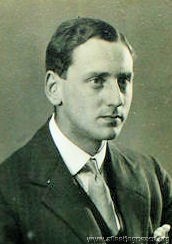 1930, aged 20
1930, aged 20an accountant from Bayswater -
Westenra, Richard
Hon Richard Westenra 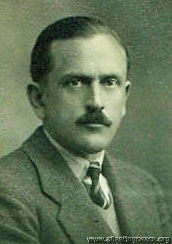 1925, aged 32
1925, aged 32Lady Mary Bailey's brother
[m. 1919
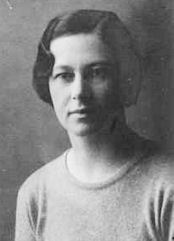
The Hon. Alice Florence [Blacker-Douglass], from Devon but b. Dublin 20 Jan 1895; owned a 1929 DH.60G Gipsy Moth, G-AAJZ.]
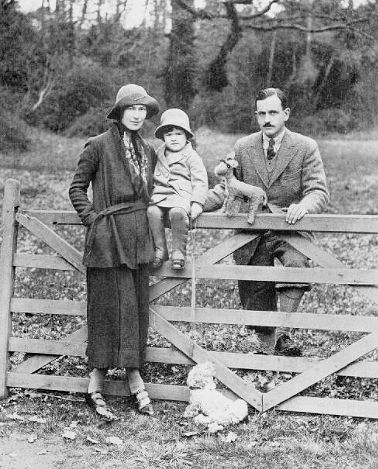 with daughter Cynthia, 1924 - The Tatler
with daughter Cynthia, 1924 - The TatlerWednesday 11 March 1936: "The Hon. Richard Westenra, brother of Lord Rossmore, was respondent to his wife's petition before Sir Boyd Merriman in the London Divorce Court yesterday and co-respondent in another suit In the first of the two connected suits.
Mrs. Allies Florence Westenra (nee Blacker Douglass). of Seafield, Millbrooke. Jersey, sought a decree nisi against the Hon. Richard Westenra on the grounds of his misconduct at a Brighton hotel in February, 1935, with Mrs. Margaret Cecilia Suliven Hope. The suit was undefended."
Richard d. 1944. Lady Mary was at his funeral.
Page 2 of 2

